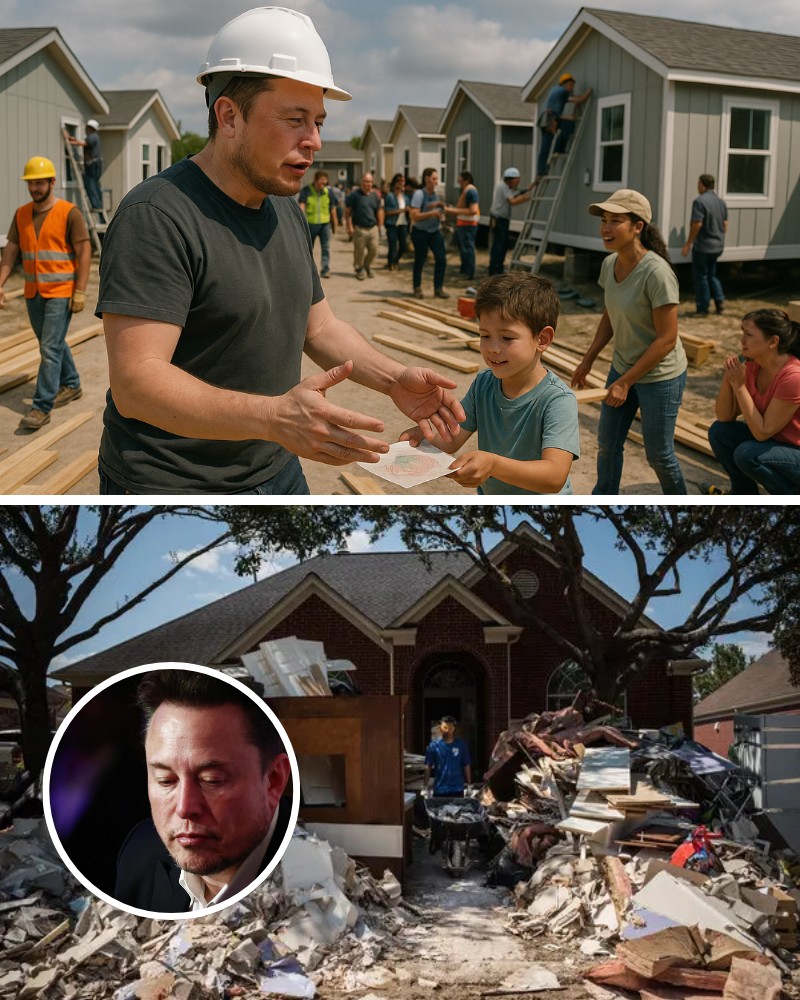In July 2025, Texas was ravaged by catastrophic flooding, one of the deadliest natural disasters in the state’s recent history, claiming at least 27 lives, including approximately 20 young girls from Camp Mystic. As communities grappled with the aftermath—destroyed homes, disrupted lives, and overwhelmed infrastructure—billionaire entrepreneur Elon Musk stepped in with a bold initiative. Through his companies and charitable foundation, Musk spearheaded the rapid construction of temporary housing for flood-affected families, providing a lifeline to those displaced by the disaster. This move, while not without controversy, underscores Musk’s growing influence in disaster relief and his commitment to leveraging his resources for humanitarian causes. This article explores the details of Musk’s initiative, its impact on Texas communities, and the broader implications of his involvement in crisis response.
The Texas Flood Crisis
The flooding that struck Texas in early July 2025 was unprecedented, fueled by heavy rainfall and exacerbated by climate factors that led to rivers overflowing and flash floods sweeping through communities. The National Weather Service reported rainfall totals exceeding 20 inches in some areas, overwhelming drainage systems and leaving entire neighborhoods underwater. The tragedy at Camp Mystic, where 20 girls were swept away by floodwaters, became a heartbreaking symbol of the disaster’s toll. Thousands of families lost their homes, with estimates suggesting over 10,000 residences were damaged or destroyed across Central and Southeast Texas
Musk’s Temporary Housing Initiative
Within days of the flooding, Musk announced through X that he was mobilizing resources to build temporary housing for displaced families in Texas. The initiative, reportedly funded through a combination of the Musk Foundation and SpaceX’s logistical capabilities, aimed to construct modular, sustainable housing units in hard-hit areas like Bastrop, Austin, and Brownsville. Drawing on SpaceX’s expertise in rapid deployment and modular construction—honed through projects like the Starbase facility in South Texas—Musk’s team promised to deliver 500 temporary homes within two weeks, a timeline that stunned local officials.
The housing units, inspired by designs from Boxabl, a modular home company Musk has previously praised, are compact yet functional, featuring single-bedroom layouts with solar-powered electricity, basic plumbing, and Wi-Fi connectivity via Starlink terminals. Each unit, costing approximately $10,000 to produce, was designed for quick assembly, with SpaceX engineers and volunteers working alongside local contractors to erect the homes on donated or leased land. By July 15, 2025, the first 100 units were operational in Bastrop County, providing shelter for families who had been living in emergency shelters or with relatives.
Musk’s involvement extended beyond funding and logistics. He personally visited the construction sites, documented in a July 10 X post where he was seen handing out Starlink kits to residents. The Musk Foundation also pledged $5 million to cover furnishings, food supplies, and temporary utilities for the housing communities, building on its earlier $2.4 million grant to SBP for Hurricane Helene recovery in 2024. Local leaders, including Bastrop’s city manager Sylvia Carrillo, praised the speed and scale of the effort, noting that it filled critical gaps left by delayed federal aid.






